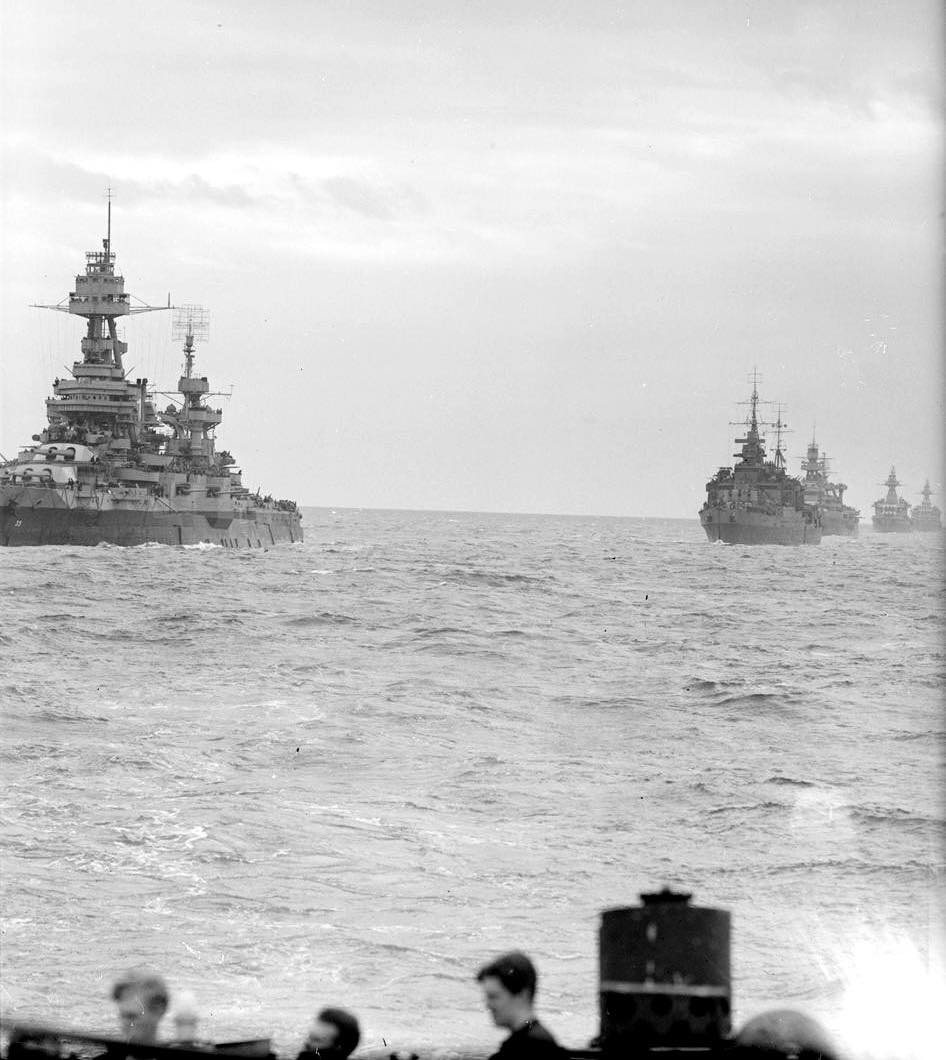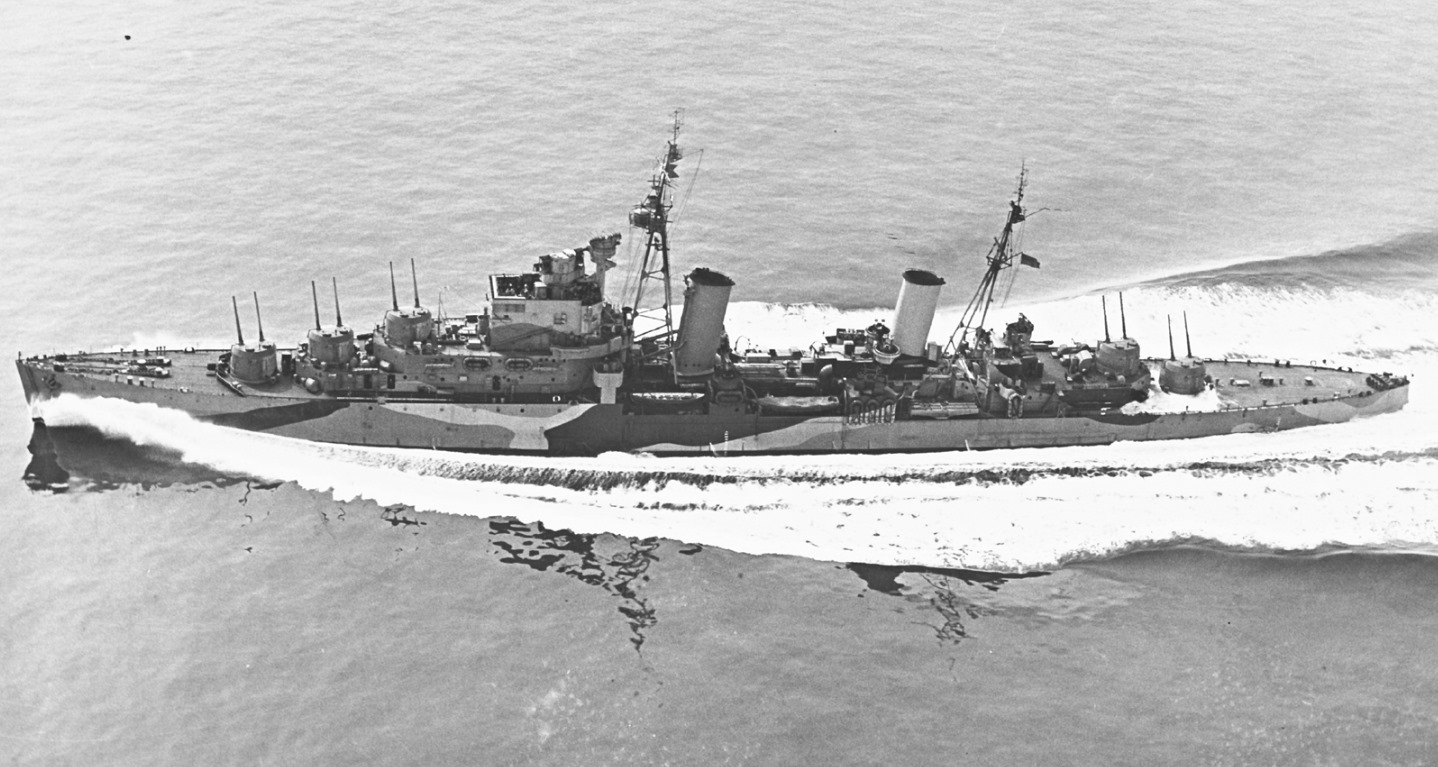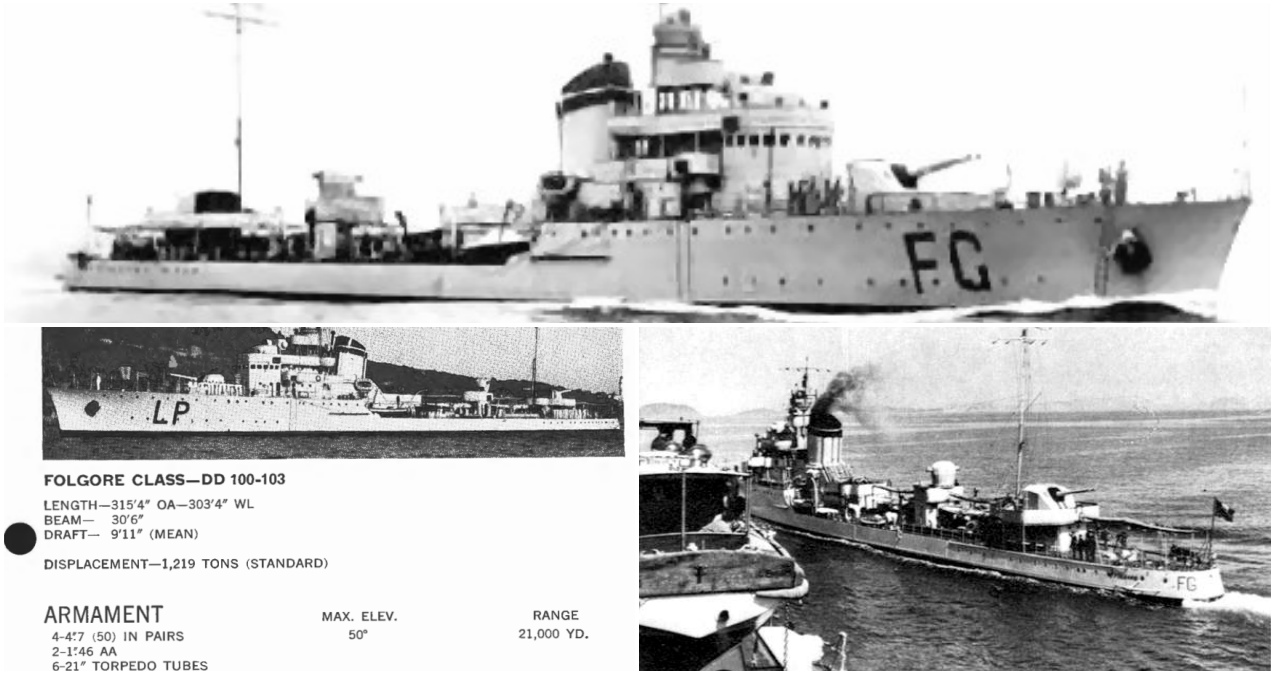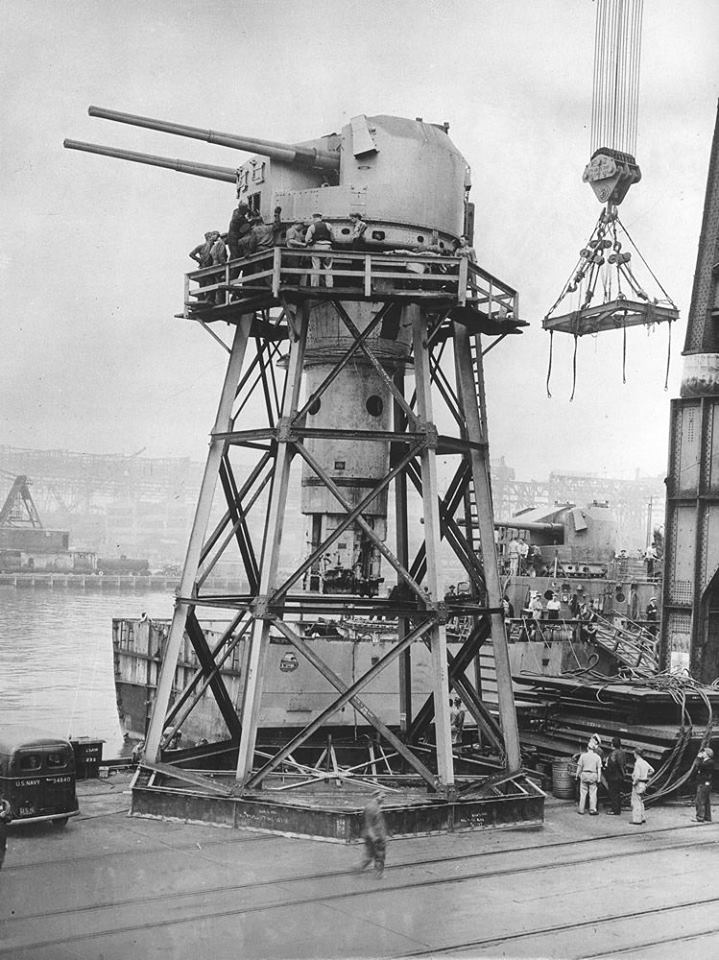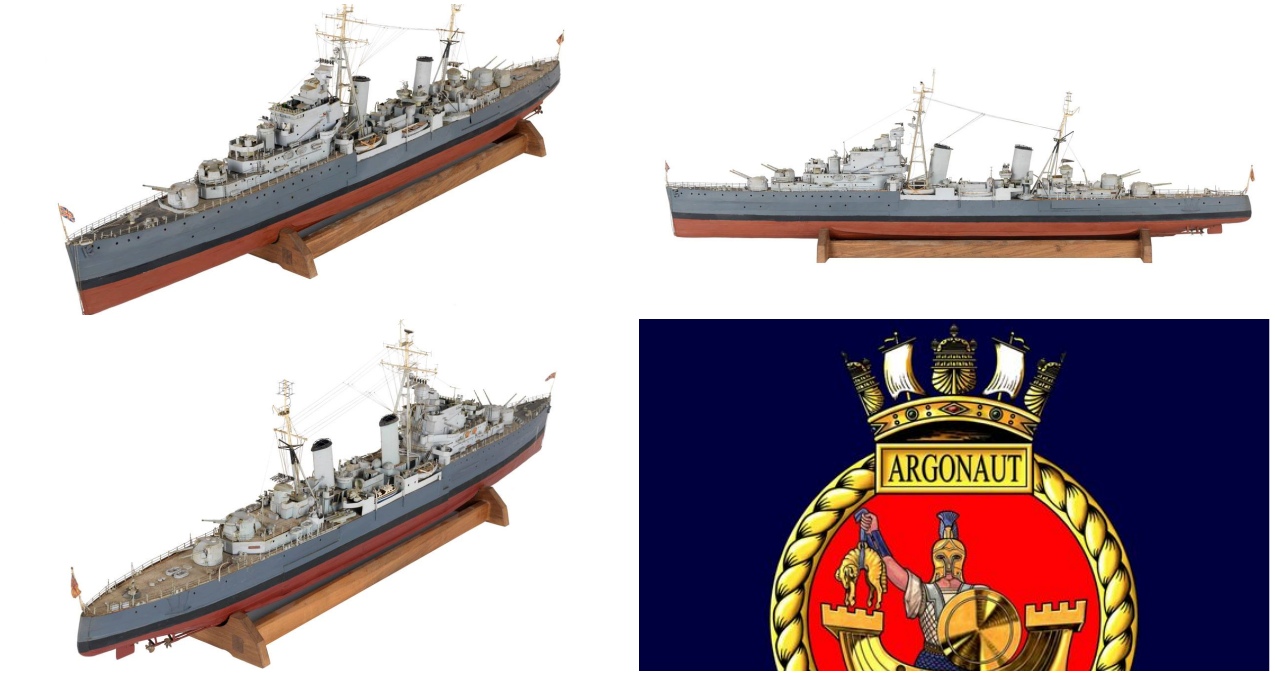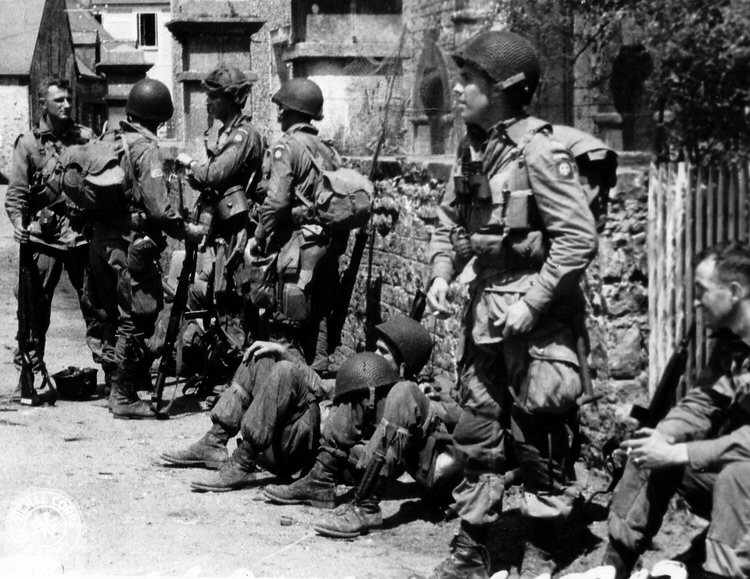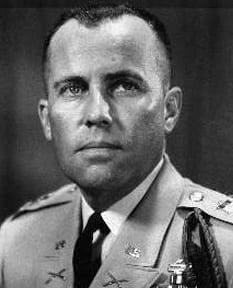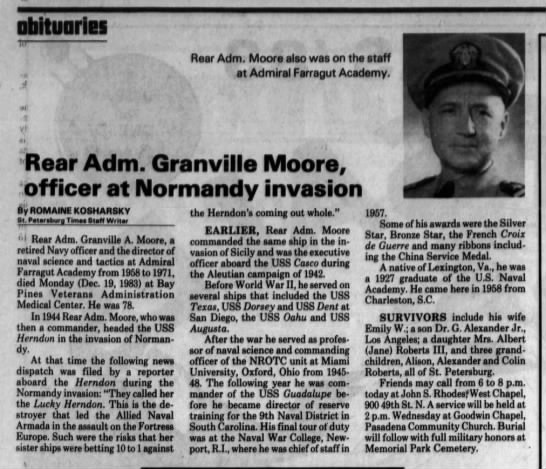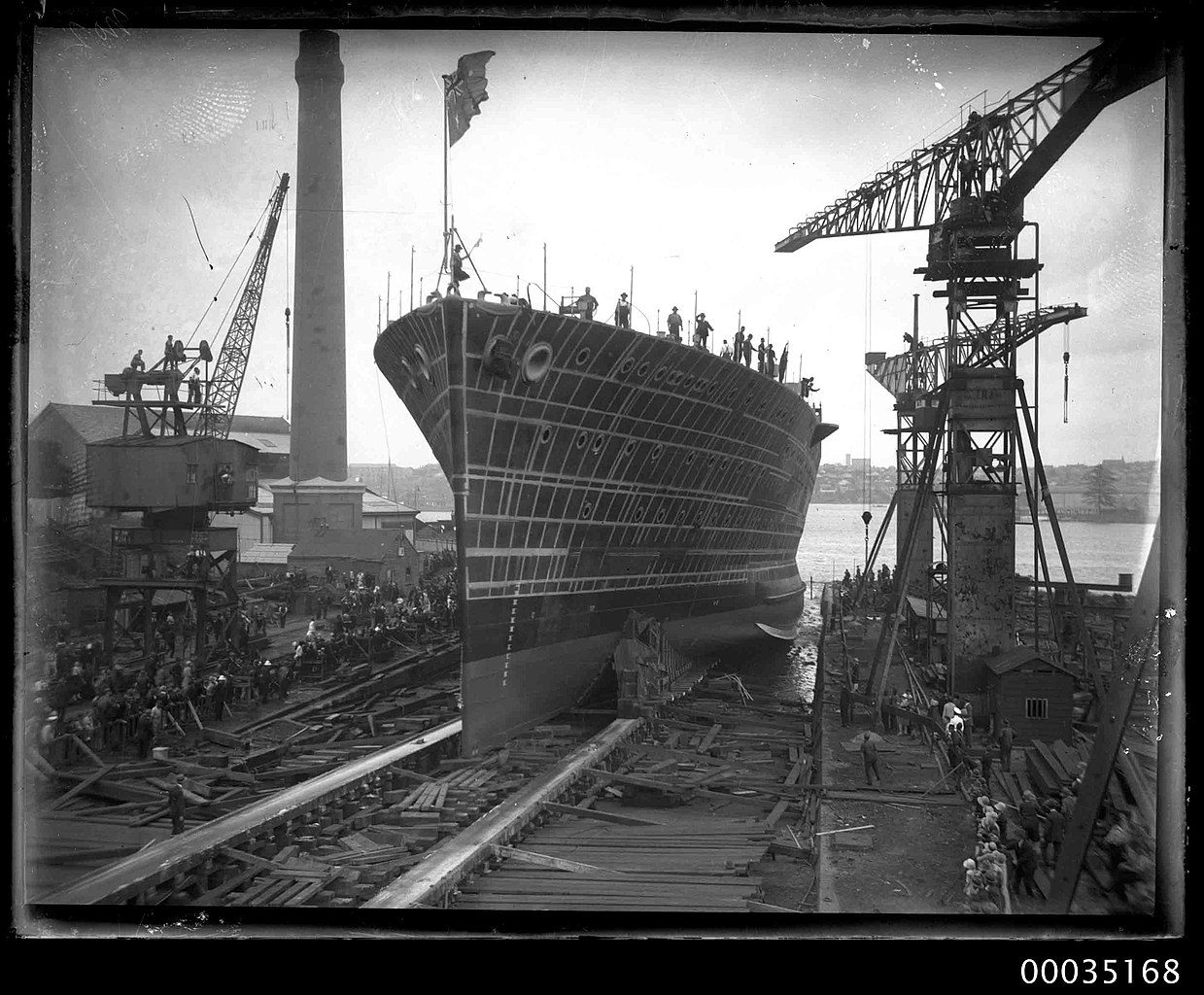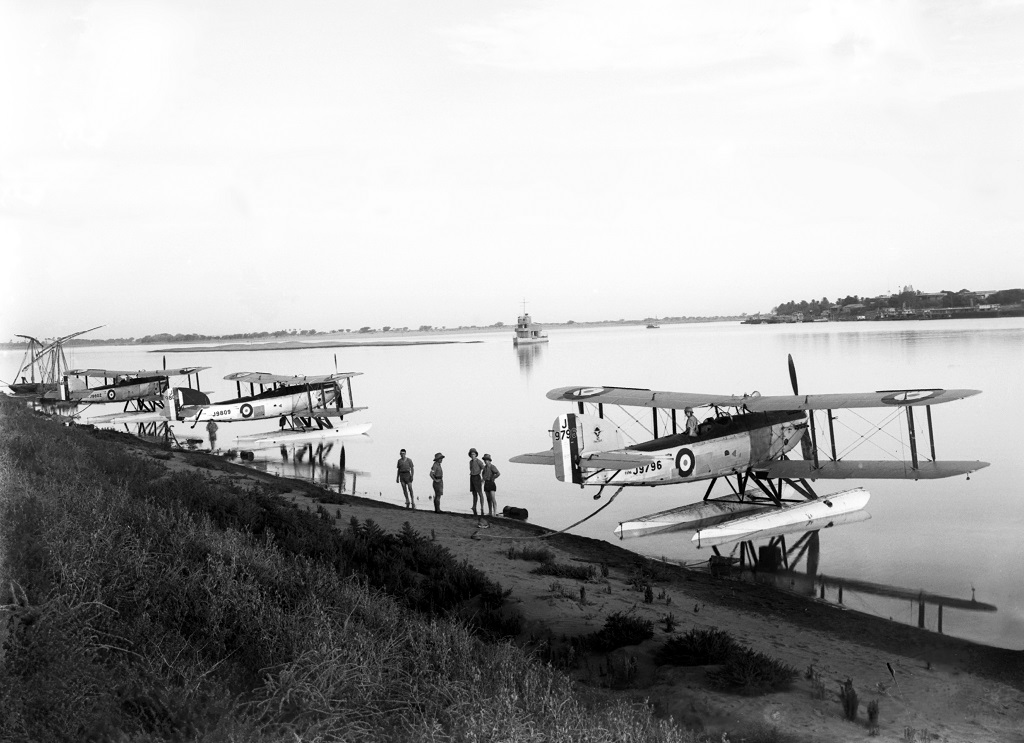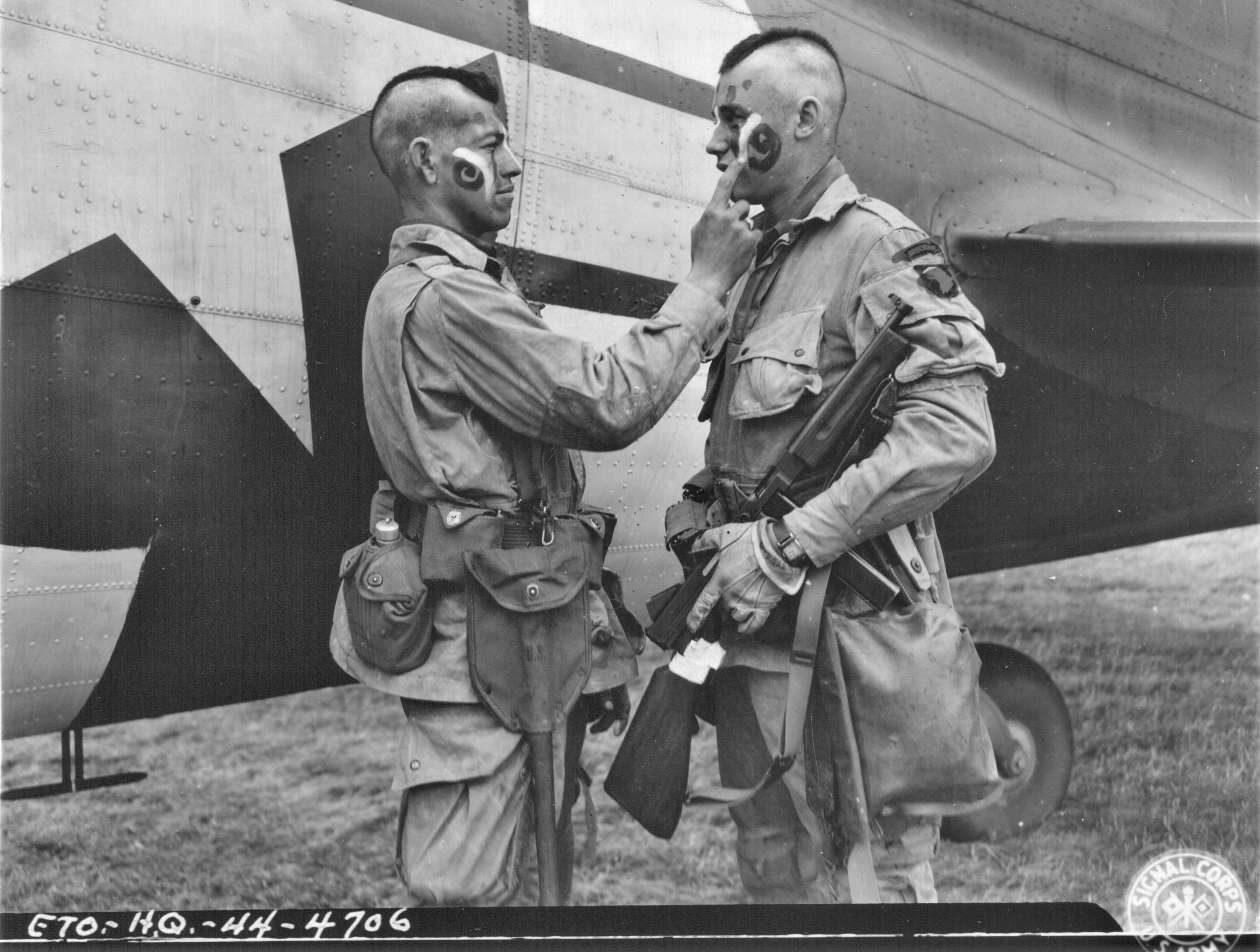Here at LSOZI, we take off every Wednesday for a look at the old steam/diesel navies of the 1833-1954 time period and will profile a different ship each week. These ships have a life, a tale all their own, which sometimes takes them to the strangest places. – Christopher Eger
Warship Wednesday, Feb. 17, 2021: The Jeep of The Deep

U.S. Navy Museum 26-G-4078
Here we see USCG-6, one of the hardy members of the skull-and-crossbones emblazoned Coast Guard “Match Box Fleet” that rode shotgun in the shallows off Normandy during the Neptune/Overlord landings in June 1944. Unlikely– and quite frankly very dangerous– vessels, these 83-foot patrol boats provided unsung service not only during WWII but for generations after.
The Coast Guard’s first modern 20th Century mid-sized offshore vessels, the massive 203-vessel 75-foot “six-bitter” patrol boats, were a child of the Prohibition-era crackdown on rumrunners and bootleggers. However, these cabin cruiser-style all-wooden boats were some of the slowest boats in the sea. Equipped with two 6-cylinder gasoline engines, they could make 15.7 knots– on a calm sea and with a light load.

A 75-foot Coast Guard boat, CG-242, at Boston in 1928, looking like it is wide open. Boston Public Library Leslie Jones Collection
By the 1930s and with the rapid expansion in the number of powerboats in consumers’ hands, the Coast Guard ordered 19 so-called “400 series” patrol boats with speed as a requirement. These craft, built by five different yards in four different types, were an important evolutionary step, not only for the USCG but also for the Navy, who about the same time was looking to get into the PT boat game. Shallow-draft wooden-hulled boats with streamlined cabins, they were packed with multiple high-octane engines below deck with the goal of breaking 20+ knots with ease.

CG 441, is one of the two experimental “400 series” 72-footers built by the service in the 1930s. “New Coast Guard boat capable of 35 miles an hour. Washington, D.C., May 17, 1937. One of the fastest things afloat, the new U.S. Coast Guard patrol boat #441 was put thru its paces on the Potomac River today for the benefit of treasury officials. The cruiser, which is one of eight to be placed in law enforcement and life-saving service of the Coast Guard, is powered with four 1,600 horsepower motors and is capable of doing 35 miles an hour.” This craft, built by Chance Marine Construction in Annapolis, would serve on the sea frontier in WWII and be sold in 1947 for scrap. Photo. LOC LC-DIG-hec-22721
By 1941, the Coast Guard had settled on a new design following lessons learned by the “400 series.”

The original 83-footer plan
Designed to use a pair of large, supped-up gasoline engines, the agency ordered 40 of these new 83-foot crafts on 19 March 1941 from Wheeler Shipyard in Brooklyn. Powered by two 600hp Hall Scott Defenders, it was expected they could make 20.6 knots at delivery. Armament was slight, just a manually loaded 1-pounder (37mm) gun forward, and a pair of .30-06 Lewis guns on the wheelhouse wings.

With a plywood interior separated by three bulkheads sandwiched between a Cedar/Oak hull and a wood deck, the crew spaces on an 83 were described by one former crewman as “a dog kennel almost big enough for 14 men.”
The first boats of the series, as it turned out, were very different from what the class would soon evolve to become. Designed to use a smooth prefabricated Everdur bronze wheelhouse, as wartime material crunches came to play just 135 hulls would have these, the rest making do with a flat and angular plywood affair. In a below-deck change, after the first five hulls, the powerplant changed to a pair of the Sterling Engine Company’s TCG-8 “Viking II” engine, a beast referred to by Engine Labs today as the “World’s Largest Inline Gasoline Engine.”
Via Engine Labs:
The TCG-8 was an inline-eight-cylinder, four-stroke engine, which consumed gasoline… and lots of it. An undersquare design, the engine featured an 8.00-inch bore and 9.00-inch stroke, for a total displacement of 3,619.1 cubic inches, or 59.3 liters, making it one of, if not the largest inline gasoline engine in the world.
The engine itself was relatively compact, at 12 feet, 2-9/16 inches long and only 44-9/16 inches wide, which allowed the two engines to fit comfortably side-by-side in the 83-footer’s hull. Housed in a gray-iron block, the crankshaft was a forged chromoly steel piece, with separately attached counterweights, which were affixed to the crankshaft via a dovetail and bolts. There were nine traditional babbit-style bearings, 4.00 inches in diameter, which measured 2.75 inches in width on eight journals, with the thrust bearing measuring a beefy 3.437 inches wide

The Sterling TCG-8 Viking.

Sterling was known among cabin cruiser builders in the 1930s and the Viking II was sold to power 60- and 70-footers of the day. The USCG’s 83-footers used two such engines, the same setup used in the 95-foot MV Passing Jack in the above ad.

Working on a Viking below the deck of an 83 in 1942. William Vandivert/LIFE
In all, 230 of these boats would be constructed for the Coast Guard and another 12 for overseas allies (19 units originally delivered to the USCG were also transferred). The initial 1941 contract was for $42,450 per hull, a cost that would rise to $62,534 by 1944 due to the increasing sensor and armament load.
By the end of the war, these boats were carrying depth charges aft, Mousetrap ASW projectors forward, and a 20mm Oerlikon as well as an SO-2 radar and QBE sonar when fully equipped. That’s a lot for an officer and a 13-man crew to take care of.

The general wartime plan, extracted from U.S. Coast Guard Cutters & Crafts of World War II by Robert Scheina
All were numbered 83300 through 83529, with corresponding (and confusing) hull numbers CG 450 through CG 634, although boats after 83384 apparently did not get said overly complicated hull numbers.

A great shot of CG 83301 with a lifeboat astern. Note the four twin can depth charge racks. The second 83 was completed in 1941, she spent four years as a harbor defense boat in NYC before shipping out for the 7th Fleet in June 1945. She was lost at Buckner Bay, Okinawa 9 October 1945 to a typhoon

Aboard an 83 in 1942 during a coastal convoy, photo by William Vandivert from the archives of Life Magazine. Note the riveted bronze wheelhouse and searchlights

This example has an M1917 water-cooled Browning forward. William Vandivert/LIFE

And two Lewis guns on the bridge wings. Note the smooth lines of the bronze superstructure. William Vandivert/LIFE

Note the older ratings and the loaded Lewis magazine. William Vandivert/LIFE

William Vandivert/LIFE

Note the two can gravity depth charge racks port and starboard. Two more racks were over the stern. William Vandivert/LIFE

Stern racks. William Vandivert/LIFE

William Vandivert/LIFE

Arming Mark VI depth charges. William Vandivert/LIFE
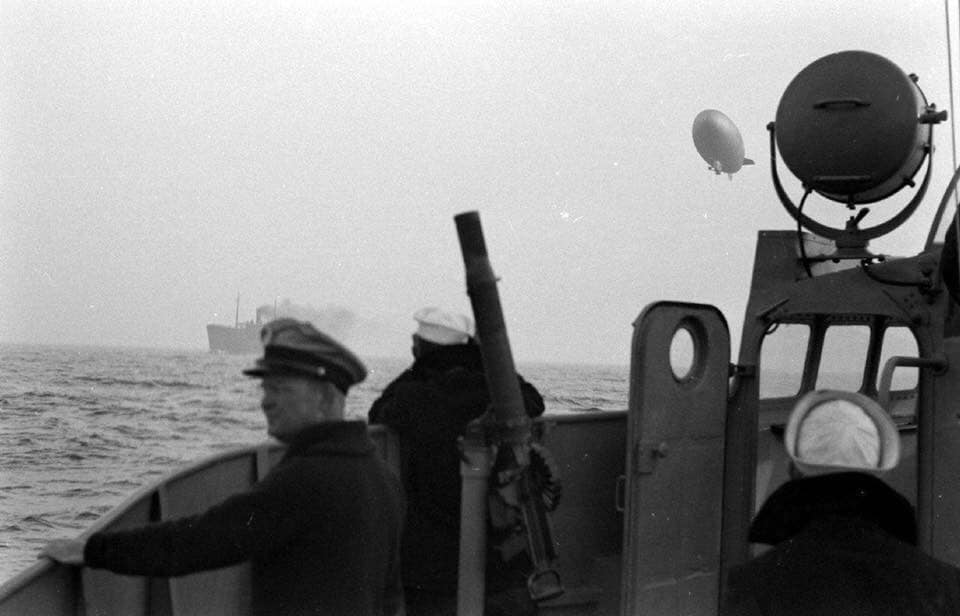
Note the Chief and the Navy blimp. William Vandivert/LIFE

A trio of USCG 83-foot cutters at Toms River, New Jersey, in early 1942. Note the two closest to the dock are wearing camouflage livery. CGC-487 (83337) was stationed at Cape May until early 1944 when she was shipped overseas to Poole, England to serve in USCG Rescue Flotilla One off Normandy (as USCG 7) and would be returned to the U.S. post-war, serving until 31 July 1961. William Vandivert/LIFE

William Vandivert/LIFE

William Vandivert/LIFE

CGC-488 (83338) seen at Toms River, New Jersey, in early 1942. She would be transferred to Peru in March 1944 as CS2. William Vandivert/LIFE

William Vandivert/LIFE

Coast Guard 83 with her water-cooled 50 cal on full-wow. Note the lit cigar and assorted seagoing tattoos NARA 26-G-508USCG Photo 26-G-508. National Archives Identifier: 205572937

CGC 624 in pristine early war condition. Note the 20mm/80 on her quarter deck and the depth charge racks off her stern. This craft would later become one of the Matchbox Fleet as USCG 14 and would go on to serve post-war as WPB-83373. Photo released on 29 October 1942, No. 105197F, by Morris Rosenfeld, New York (USCG photo)

USCGC 83352 (83′ patrol boat) running plane guard duty for USS Essex (CV-9) in the Gulf of Paria, Trinidad, 20 March 1943 while the carrier was on her shakedown cruise. Note the white stripe marking around the boat, and call letters atop her pilothouse. Assigned to Trinidad for her entire career, she was disposed of there in November 1945. Good duty if you can get it! NARA photo 80-G-K-429.

“Due to their low silhouette and slight wake, these craft are often mistaken for submarines,” notes the Sept 1943 ONI 56 on the Coast Guard 83 foot cutters as sub-busters.

Coast Guard Cutter 83354, 1944 based in Port ‘o Spain, Trinidad, British West Indies. Note she is set up for sub-busting with numerous depth charges on deck and a recognition stripe across her wheelhouse. Assigned to the CARIBSEAFRON for her entire career, this cutter was decommissioned in Nov. 1945 and disposed of locally

US Coast Guard 83-foot Cutter 83359 on patrol in Atlantic, January 1943, via LIFE Archives by Dmitri Kessel. Stationed at Southwest Harbor, Maine, CG 83359 was assigned to the EASTSEAFRON during WWII and would remain in service until June 1959 when she was decommissioned. She was sold that November.

same as above

Same as above. Note her depth charge racks

US Coast Guard 83-foot Cutter on patrol in Atlantic, January 1943, via LIFE Archives by Dmitri Kessel. Note the water-cooled M2 with slab ammo box

Same as above

Inside the cramped wheelhouse of a US Coast Guard 83-foot Cutter on patrol in Atlantic, January 1943, via LIFE Archives by Dmitri Kessel.

Same as above

US Coast Guard 83-foot Cutter on patrol in Atlantic, January 1943, via LIFE Archives by Dmitri Kessel. Note the depth charge arrangement with eight ash cans ready to go!

US Coast Guard 83-foot Cutter on patrol in Atlantic, January 1943, via LIFE Archives by Dmitri Kessel.
The most significant combat “kills” attributed to the 83s came from a Cuban-manned boat, Caza Submarino 13 (CS-13). One of 10 delivered to the Cubans at Miami, CS-13 splashed U-176, a Type IXC on 15 May 1943 in the Florida Straits northeast of Havana.

CS-13 is the smallest U-boat killer.
Lifesavers
Deployed far and wide, the 83s in USCG service were often the first on the scene to pick up wrecked mariners after a U-boat slipped back under the sea, especially during 1942’s Operation Drumbeat submarine offensive.
83305– Rescued 11 from the freighter City of New York.
83309– Pulled nine survivors of the schooner Cheerio from the water.
83310– Rescued 25 from the tanker C.O. Stillman and another 50 from the tanker William Rockefeller.
83322– Rescued 14 from the freighter Santore.
In the lead-up to Overlord/Neptune, a group of 60 83s along with 840 Coasties were assembled on the eastern coast of England, under the suggestion of FDR himself. Dubbed Rescue Flotilla One under the command of LCDR Alexander V. Stewart, Jr., they would accompany the waves of LCIs and other landing craft into the beaches and, using their 5-foot draft, close in with sinking vessels to recover survivors and floaters.
To keep things easy, the craft was renumbered USCG 1 through USCG 60 and given a large white star on their wheelhouse for aerial recognition.

They landed most of their armament and trained in triage and lifesaving– ready to lower rescue swimmers over the side with a rope if need be.
A superb reference for the “Matchbox Fleet” at Normandy is the 1946 Coast Guard at War: The Landings in France which covers the operation of the flotilla across some 30 pages. Drawn from that is this page on the prep on these “Sea Going Saint Bernards”:


US Coast Guard Cutter 16 at Poole, England in 1944. Notice USCG 10 to the left. CG 16, under LT (j.g.) R.V. McPhail, achieved the Flotilla’s rescue record, picking up 126 survivors and one cadaver on D-Day from three landing craft stricken within a half-mile of the beach, all handled in less than six hours. UA 555.03

Two U.S. Coast Guard 83-foot patrol boats operated off the Normandy beaches as rescue craft, in June 1944. They are USCG-20 (83401) and USCG-21 (83402). 26-G-3743
As noted by the Coast Guard Historian’s Office:
They earned the nickname “Matchbox Fleet” due to their wooden hulls and two Sterling-Viking gasoline engines — one incendiary shell hitting a cutter could easily turn it into a “fireball.”
They were assigned to each of the invasion areas, with 30 serving off the British and Canadian sectors and 30 serving off the American sectors. During Operation Neptune/Overlord these cutters and their crews carried out the Coast Guard’s time-honored task of saving lives, albeit under enemy fire on a shoreline thousands of miles from home. The cutters of Rescue Flotilla One saved more than 400 men on D-Day alone and by the time the unit was decommissioned in December 1944, they had saved 1,438 souls.

“Normandy Landings, June 1944. Coast Guard Invasion Rescue Flotilla Men on Alert. They wear the Death’s Head emblem of skull and crossbones on their helmets, these Coast Guard invasion veterans, but theirs is an errand of mercy. Here, members of an 83-foot Coast Guard rescue cutter, part of the famous flotilla which rescued hundreds of men from the cold channel waters off France, keep alert while on patrol.” 26-G-2388

The 83-foot Coast Guard cutter USCG 1 (83300) off Omaha Beach on the morning of 6 June 1944, tied up to an LCT and the Samuel Chase. Escorting the first waves into Omaha her crew pulled 28 survivors from a sunken landing craft before 0700 on D-Day.
Do not get it confused, the Coasties weren’t just there as sort of a seagoing ambulance service, untargeted by enemy bullets. They took fire of all sorts all day. McPhail’s CG 16 for instance “nosed in among the struggling groups of men floundering in diesel oil and debris. Although shells were splashing around it and mines were detonating, the cutter’s crew calmly went about the rescue work. With 90 casualties as its first load, the cutter sped to the Coast Guard transport Dickman.”

“Normandy Invasion, June 1944. Coast Guard Rescue Craft Shelled by Nazis. Twin spouts boil close off the stern of a U.S. Coast Guard invasion rescue craft in the English Channel as Nazi shore batteries pour shellfire into the mighty Allied liberation fleet.” 26-G-2374
The boats of the Matchbox Fleet remained offshore for days, dodging gunfire from marauding E-boat raids, magnesium flares dropped by German planes at night, and bumping up against parachute mines.

“Normandy Invasion, June 1944. Towed back from Death. Torn by German shells, the landing barge was sinking. American soldiers aboard appeared lost as the little craft settled in the English Channel waters. Along came a Coast Guard Rescue Cutter poking boldly into the shoal waters. A line was cast and made fast.” 26-G-06-24-44(2)

“Sub Busters in Invasion Role. The U.S. Coast Guard’s famous 83 footers, sub-busters in the Battle of the Atlantic, and to their laurels as a rescue craft in the D-Day sweep across the English Channel to the French Coast. These swift, little, intrepid crafts are the Coast Guard boats that have been mentioned over and over again in radio and news dispatches for their gallant rescue role during the initial smash on France.”
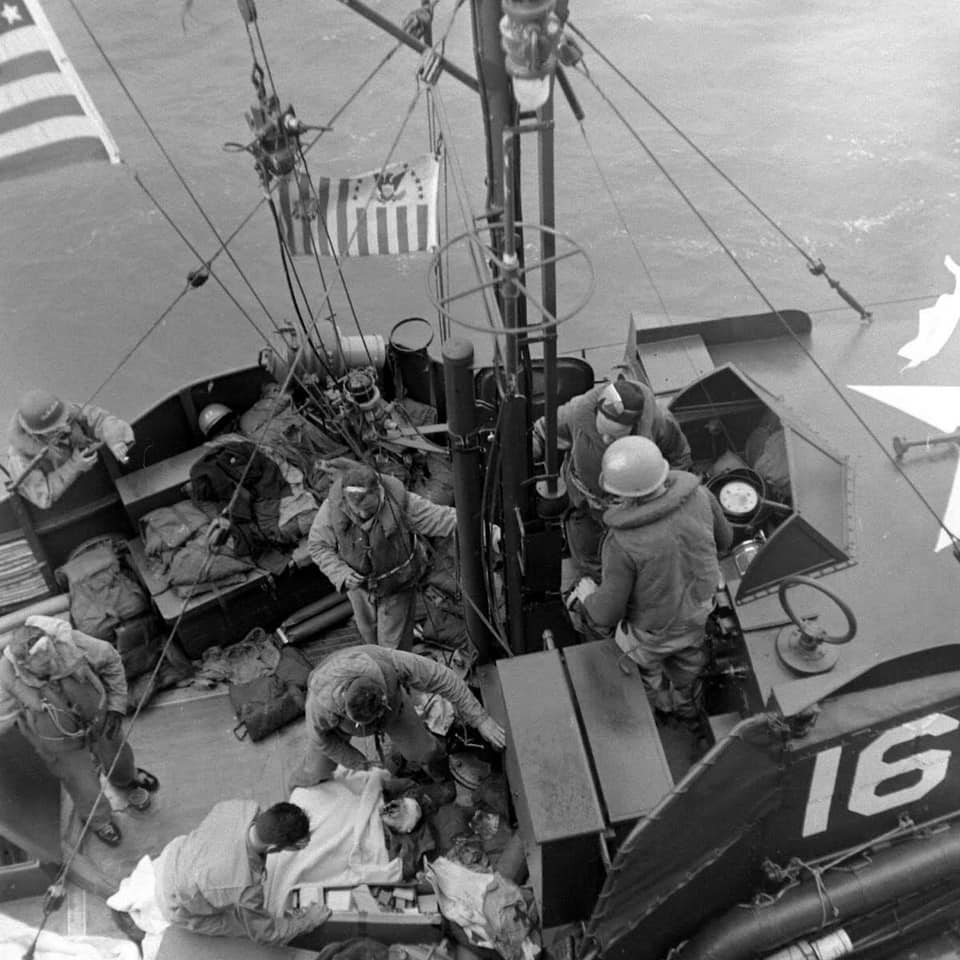
Coast Guard 83-foot rescue boat CGC-16 unloading wounded troops off Normandy France June 6, 1944, to USS Joseph T. Dickman APA-13 0930 hrs morning of D-Day LIFE Archives Ralph Morse Photographer

Casualties were transferred from a U.S. Coast Guard 83-foot rescue boat to a larger ship, for evacuation from the combat zone, in June 1944. Note the name Miss Fury on the boat’s superstructure as well as the large white star for aircraft recognition and the radar on the mast. 26-G-2346

USCG 20 was driven ashore in Normandy during the storm that destroyed the artificial Mulberry harbors in June 1944. She was later repaired and transferred to the Royal Navy.
There were many other USCG-manned and operated craft off Normandy for Overlord/Neptune.

Many also performed yeoman service that day.
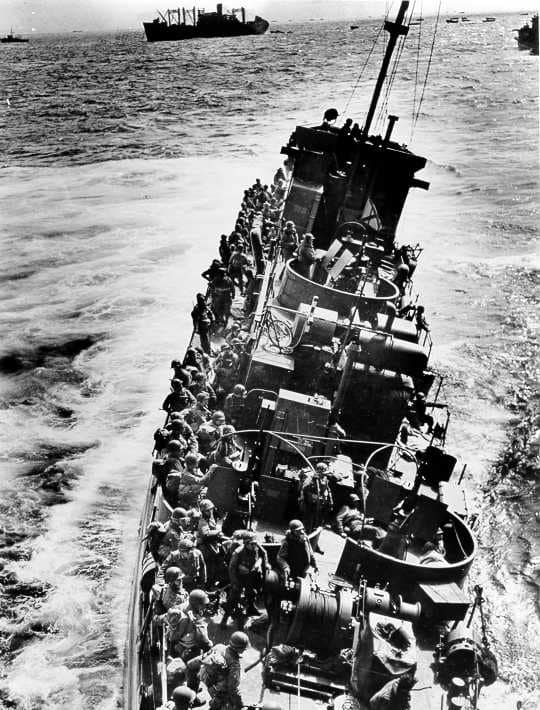
“The Coast Guard-manned landing craft LCI(L)-85 approached the beach at 12 knots. Her crew winced as they heard repeated thuds against the vessel’s hull made by the wooden stakes covering the beach like a crazy, tilted, man-made forest… The Coast Guard LCI(L)-85, battered by enemy fire after approaching Omaha Beach, prepares to evacuate the troops she was transporting to an awaiting transport. The “85” sank shortly after this photograph was taken. The LCI(L)-85 was one of four Coast Guard LCIs that were destroyed on D-Day.”
Post-Overlord
In the days immediately after the landings, six 83-footers of the Matchbox Flotilla were detailed to operate a rush cross-channel courier service, making four crossings a day carrying mail and urgent Army dispatches to France every six hours. While the Army had originally planned to use planes for the task, it was found that the boats could get there more reliably, even if they had to maneuver around floating mines and unmarked wrecks in the process.
The Pacific
Meanwhile, the 83s were involved in the push toward Tokyo as well. In January 1945, 30 boats were formed into USCG PTC Flotilla One and sent to Manicani Island in the Leyte Gulf, where the U.S. was busy rooting out Japanese holdouts in the quest to liberate the Philippines. Some eight miles west of Guiuan, Manicani would become a major destroyer repair base and a ship repair unit. Another 24 boats were dispatched late in the war to operate with the 7th Fleet at Okinawa, Saipan, Guam, Eniwetok, and elsewhere to serve as harbor defense vessels, on guard against Japanese suicide attacks and frogmen.
Speaking of which, one such vessel, USCGC 83525, was dispatched with Navy RADM M.R. Greer (COMMFLTAIRWING 18) from Tinian to remote Aguijan Island in the Northern Marianas on 4 September 1945 to accept the surrender of the tiny garrison from 2nd LT Kinichi Yamada of the Imperial Army. The Coastie was sent as a larger vessel could not negotiate the shallows of the island.

As detailed by one of the attendees of the event:
When Yamada climbed aboard from a landing craft, his greenish pallor matched the color of his faded uniform. He looked even smaller than he had at our first meeting, encumbered as he was with an outsized dispatch case. The confined deck space on the slender vessel posed a problem: where to place the surrender documents for the signing. Finally, the skipper of the Coast Guard boat suggested using the cover of a ventilator just behind the wheelhouse, and that was where the parties arrayed themselves, the Americans on one side and the three Japanese on the other. Nobody invited me to be part of the U.S. contingent, so I positioned myself directly behind Yamada.
Further, the 83s were influential to the war effort in a quiet way, as they were a big feature on period recruiting posters for the Coast Guard. Of course, less than 3,000 of the service’s 170,000 men at its wartime peak were assigned to these hardy boats at any given time, but you got to get the kids off the farm somehow.


USCG Combat Artist BMC Hunter Wood, a skilled maritime artist, spent some time among the 83s in the New York and New England area during the war and left a series of beautiful sketches of them at work.

Protector of the Convoy! 83 Footer, CGC# 485, 6/7/1943, screens a freighter on a coastal convoy. By Coast Guard Artist Hunter Wood NARA
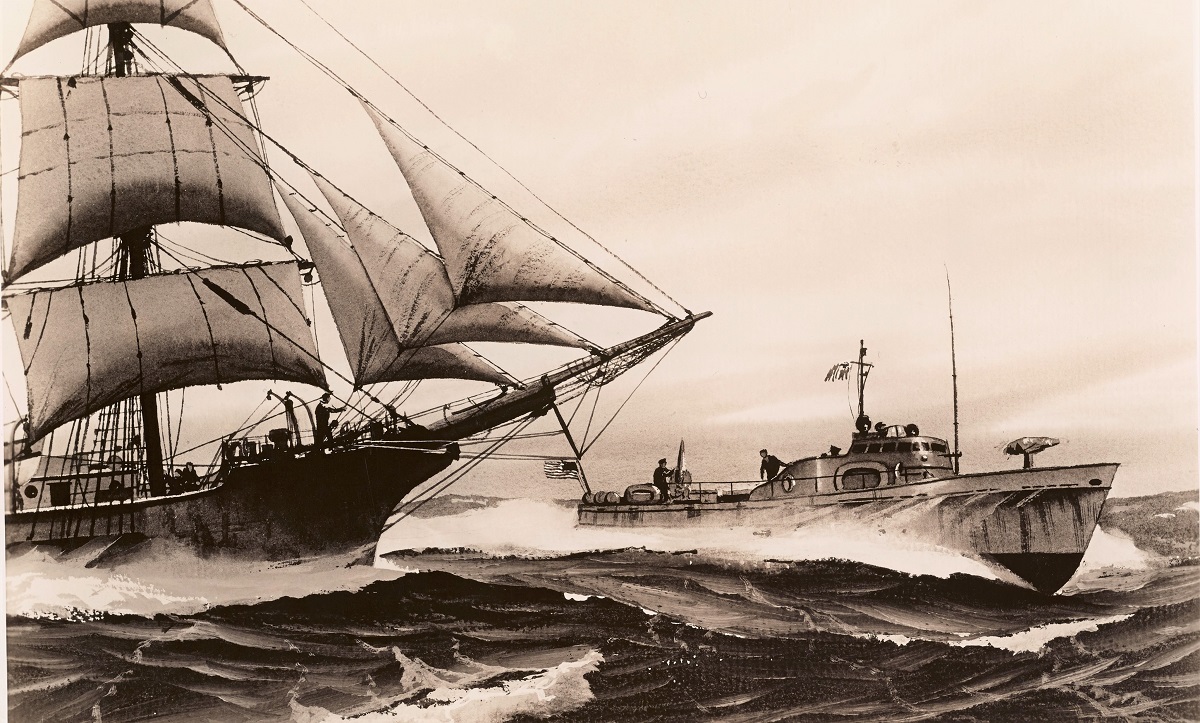
Ahoy, Old-Timer! Here’s My Spray, 5/14/1943. This image depicts artwork of The United States Coast Guard 83-footer zipping across the bow of the training ship Joseph Conrad as the craft meet offshore. Conrad spent the war training merchant marine cadets. Artwork by BMC Hunter Wood. NARA 205575840

Ash Cans Away! 83 Footer Attacking Sub. By Coast Guard Artist Hunter Wood. NARA 205575791

Raking the Raider! 83 Footer Attacking Sub, 6/17/1943. Hunter Wood. NARA 205575796
Post-war
Their wartime service was largely forgotten, the 83s earned no battlestars and unit citations. Those sent overseas were largely left there, either to rot or to be transferred to overseas allies. Several were lost during the war: 83301 and 83306 to a 1945 typhoon in Okinawa; 83415/CG 27 and 83471/CG 47 sank in a storm off Normandy two weeks after D-Day, their hulls were torn open on submerged wreckage, and 83421 was lost due to a midnight collision with a subchaser while on a blackout convoy. Others were soon disposed of in the inevitable postwar constriction of funds.
These wooden boats, after several years of hard work, were overloaded, stressed, and could typically by 1945 just plod along at about 12 knots, sustained by. By 1946, around 100 remained in Coast Guard custody, with many of those laid up. The Navy picked up a handful for such miscellaneous use as range control boats, yard boats, and torpedo retrievers.
Some were upgraded with Cummings diesel engines and all-white peacetime schemes and continued in Coast Guard service through the 1950s. Notably, their armament in peacetime seems to have solidified with a single 20mm Oerlikon over the stern, four abbreviated two-can depth charge racks clustered around the gun, and two mousetraps forward although the latter feature was not always mounted.

CG 83464 in 1949. Delivered in July 1943 from Wheeler, she served out of Charleston before joining the D-Day fleet as CG 43. She was decommissioned in 1961 and sold.

CG 83499 at Biloxi’s annual blessing of the fleet. Note the canvassed 20mm on her stern under an awning. This boat spent WWII as a training ship at Coast Guard HQ and was disposed of in 1959.

CGC 83499 in Pascagoula, MS circa late 1950s

Post-WWII 83-foot cutter CG 83483 in Friday Harbor, of Washington’s San Juan islands. Note her white scheme, lack of armament, and her radar mast. Delivered in September 1943, she was used by the Navy as an Admiral’s yacht, first with COM4THFLEET at Boston (43-44) and then with COM7THFLEET at Guam (1945) until chopping back to USCG control, based in the PacNorthWest. She served until May 1960 when she was sold.

The 327-foot Treasury-class cutter Bibb (note her post-war weather balloon hangar behind her stack, installed for use on Ocean Stations), is being serviced by the tug C B Loring, and a white-painted 83-foot patrol boat, 83486. According to Schena, 83486 was delivered Sep 43 and assigned to the 7th Naval District at New Smyrna Beach, FL until Dec. 44. It Transferred to the 1st Naval District and was stationed at Boothbay ME. She was decommissioned on 3 Nov 61 and sold Au 62, one of the last in service.

83s also repeatedly showed up in films throughout the 1940s-60s, such as this unmarked craft that portrayed a Japanese gunboat in 1964’s Cary Grant WWII Coastwatcher comedy, “Father Goose.” The large deck gun is likely fake but looks good from a distance.
With the service gaining new and improved patrol boats of the Cape and Point classes, the days of the old 83s were fading. In the early 1960s, the remaining 44 hulls still holding on were liquidated, with many being disposed of by fire or scuttling post-decommissioning. The last on the USCG’s rolls was CG 83506, disposed of by sinking on 22 March 1966.
Under other flags
Vessels in overseas service remained around for a few more years. The type was used by Cuba (12), the Dominican Republic (3), Haiti (1) Venezuela (4), Colombia (2), Peru (6), and Mexico (3) in the Americas.

CS-2, an 83-foot subchaser transferred from USCG to Peru in 1944. This is the CGC-487 seen above in New Jersey

Patrullero caza submarino Briceño Méndez (CS-3) in Venuzelan service. Was later disarmed in the late 1950s and retained as a “Lancha Hidrográfica” until at least 1962.
Several boats, delivered post-war, remained on active duty until the 1990s with NATO naval forces.

A Spanish Moustrap-equipped 83-foot anti-submarine boat, LAS-10, is seen crossing the Ferrol River. In the background of the image, the Pizarro-class frigate Vicente Yáñez Pinzón (F-41) docked at La Graña Naval Station. For a frame of reference, Pinzón was active between 1949 and 1983.

The LAS stood for “Lancha Anti Submarina,” and three (LAS-10, LAS-20, and LAS-30) were in service as late as 1993, by which time they had been redesignated Patrulleros Anti Submarinos with a resulting PAS-10, 20, 30 renaming.

They carried a 20mm Hispano-Suiza aft, two 7.62mm GPMGs on the bridge wings, and a pair of four-rail MK20 Mousetraps (“ratonera” in Spanish service).
Notably, four transferred to Turkey in 1953 were noted in Janes as late as 1995, still with their mousetraps.

Survivors
Some remaining vessels were converted into yachts, fishing boats, dive charter vessels, or workboats and ultimately faded into history.
Others had more pedestrian fates.

CGC 83499, the old ghost of the Mississippi Sound shown in the two above photos, was ashore as Pandora’s steak house in Destin until 2005.

Stripped 83s for sale in the Tacoma area in the 1960s, as-is, how-is, where-is
CG-83527, which served on anti-submarine duties in the Gulf of Mexico in WWII, ended her career in Tacoma, Washington in 1962. She was saved in 2003 and restored slowly and extensively over a decade to roughly her 1950 appearance. Its operators have an extensive website with many resources on the class including a full set of plans.
Another of the class, 83366/D-Day CG 11, was purchased by a Seattle couple in terrible condition for $100 and they are in the process of returning her to her 1944 arrangement.

Notably, CG 83366 still has her bronze pilothouse.
LT Linwood A. “Tick” Thumm, one of the last of the wartime 83 skippers, passed at age 105 last year.
Speaking of vets, the 83-Footer Sailor portal, long maintained by Al Readdy, seems to be offline but can still be found via archives. Meanwhile, those interested in Coast Guard patrol boat history, in general, should check out HMC James T. Flynn, Jr., USNR(ret)’s excellent 61-page essay.
Today, the USCG Museum has a panel dedicated to the work of the Matchbox Fleet in their D-Day exhibit.

Specs: (extracted from U.S. Coast Guard Cutters & Crafts of World War II by Robert Scheina)

A Wartime 83 by Jack Read
Displacement: 76 tons fully loaded
Length: 83 ft
Beam: 16 ft
Draft: 5 ft. 4″
Main Engines: 83343 through 83348: 2 Hall Scott Defenders, 1.200 rpm; all others: 2 Sterling Viking II SHP All units: 1,200
2 Propellers: 34″Dia X 27° Pitch (Pitch varied with the mission)
2 Kohler Generators 120/240 VAC 60 cycle
Max Speed 15.2 kts, 215 mi radius (1945); 23.5 statute mi (trials,1946)
Max Sustained 12.0 kts. 375 mi radius (1945)
Cruising 10.0 kts, 475 mi radius (1945)
Economic 8.2 kts, 575 mi radius (1945)
Gasoline (95%) 1,900 gal
Complement 1 officer, 13 men (1945)
Electronics (1945)
Detection Radar SO-2 (most units)
Sonar QBE series (none on 83339. 83367-83369, 83427, 83476-83480)
Armament
1941 1 1-pounder. 2 .30cal mg
1945 1 20mm/80,4 dc racks with 8 Mark VI depth charges. 2 Mousetraps; none on 8330
83312, 83335, 83342, 83367, 83387, 83388, 83392, 83427, 83470, 83475. 83491. 83492. 83494,
83501, 83507, 83512, 83515, 83516, 83518-83521, 83529
If you liked this column, please consider joining the International Naval Research Organization (INRO), Publishers of Warship International
They are possibly one of the best sources of naval study, images, and fellowship you can find. http://www.warship.org/membership.htm
The International Naval Research Organization is a non-profit corporation dedicated to the encouragement of the study of naval vessels and their histories, principally in the era of iron and steel warships (about 1860 to date). Its purpose is to provide information and a means of contact for those interested in warships.
With more than 50 years of scholarship, Warship International, the written tome of the INRO has published hundreds of articles, most of which are unique in their sweep and subject.
PRINT still has its place. If you LOVE warships you should belong.
I am a member, so should you be!
